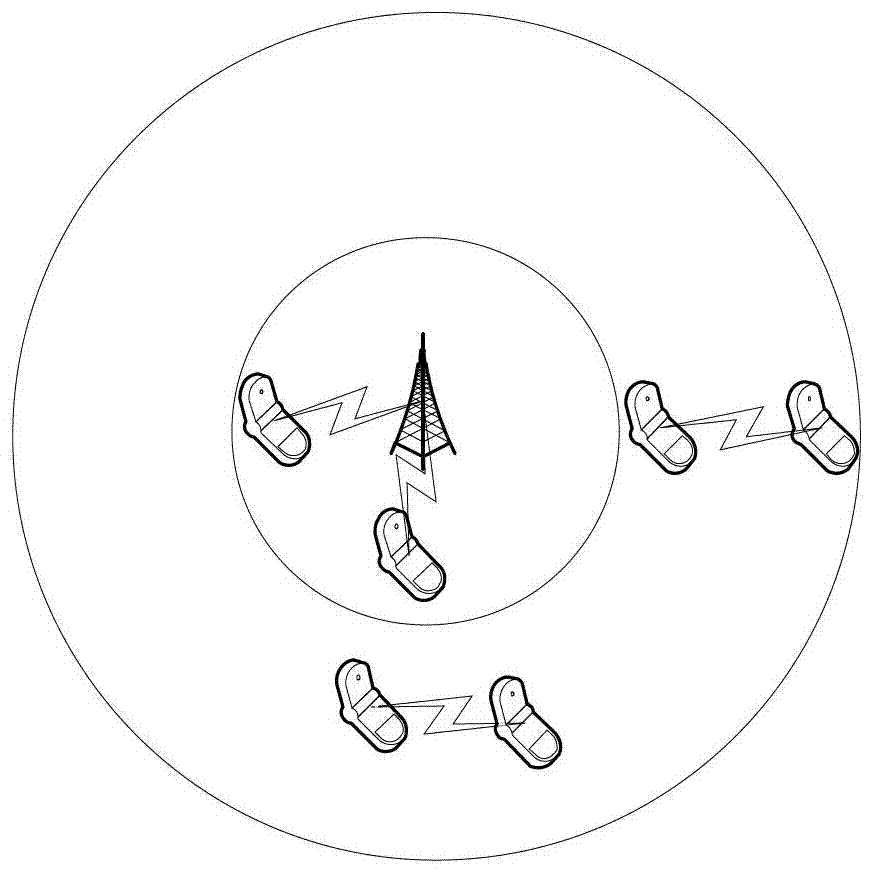Straight-through self-adaptive resource distribution method for cellular communication system terminal
A cellular communication system and terminal direct connection technology, applied in wireless communication, electrical components, etc., can solve problems such as limitations, achieve the effects of reducing interference, improving D2D system capacity, and improving capacity and spectrum efficiency
- Summary
- Abstract
- Description
- Claims
- Application Information
AI Technical Summary
Problems solved by technology
Method used
Image
Examples
Embodiment Construction
[0022] Assume that the number of subcarriers contained in an OFDM symbol is M, and the number of cellular users and D2D pairs is N C and N D , the D2D users can directly communicate under the coordination of the base station, and the D2D users reuse the resources of the cellular users during communication.
[0023] We assume that the power of all cellular users reaching the base station is controlled at the same level P CB ,Right now
[0024] P CB = P Ci · ( d Ci ) - a , ∀ i [formula one]
[0025] P CB is a constant, P Ci is the transmit power of the i-th cellular user, d Ci is the distance from the cellular user to the base station. Then the interference power of cellular users to D2D can be written as ...
PUM
 Login to View More
Login to View More Abstract
Description
Claims
Application Information
 Login to View More
Login to View More - Generate Ideas
- Intellectual Property
- Life Sciences
- Materials
- Tech Scout
- Unparalleled Data Quality
- Higher Quality Content
- 60% Fewer Hallucinations
Browse by: Latest US Patents, China's latest patents, Technical Efficacy Thesaurus, Application Domain, Technology Topic, Popular Technical Reports.
© 2025 PatSnap. All rights reserved.Legal|Privacy policy|Modern Slavery Act Transparency Statement|Sitemap|About US| Contact US: help@patsnap.com



